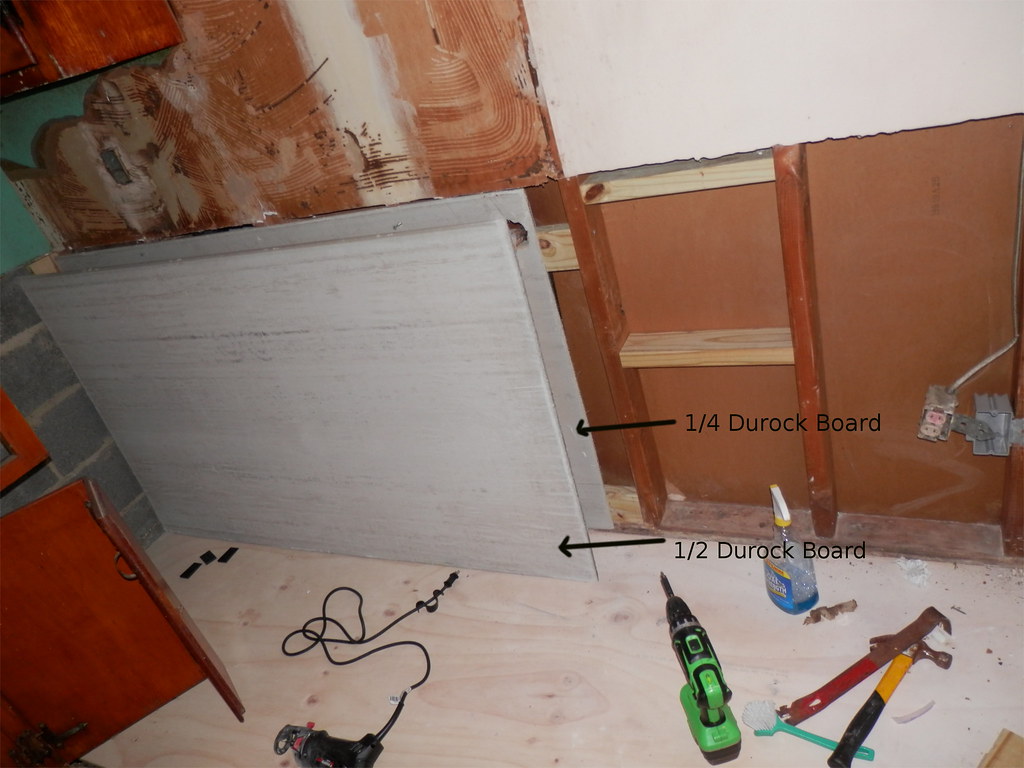At a very slow pace I am redoing a kitchen that have had lots of water damage in the past due to a slow leak in a vacant house. Most of the damaged subfloor was replaced. But, it seems that drywall is very prone to water absorption and mold +*mildew*growth in a naturally humid environment, and often when drywall it is contaminated with mold or mildew it needs to be replaced due to be porous,etc. So I decided to partially use (bottom segments that are more likely to be contaminated) 1/2 cement boards instead of drywall as shown below:*

Note that the cement board (backerboard) portions will be behind the future kitchen cabinetry, so any potential imperfection or unevenness will not be visible. I am also using some 2x4 blocks to provide extra support for the edges that don't meet at a stud.
I understand that since I am using*backerboard+ drywall (existing upper portion), where they meet (joint) I should use thinset+tape(forbackerboard) to seal their union. Also, leaving 1/4" gab all the way around. Is this a good approach to this situation?
thks

Note that the cement board (backerboard) portions will be behind the future kitchen cabinetry, so any potential imperfection or unevenness will not be visible. I am also using some 2x4 blocks to provide extra support for the edges that don't meet at a stud.
I understand that since I am using*backerboard+ drywall (existing upper portion), where they meet (joint) I should use thinset+tape(forbackerboard) to seal their union. Also, leaving 1/4" gab all the way around. Is this a good approach to this situation?
thks




